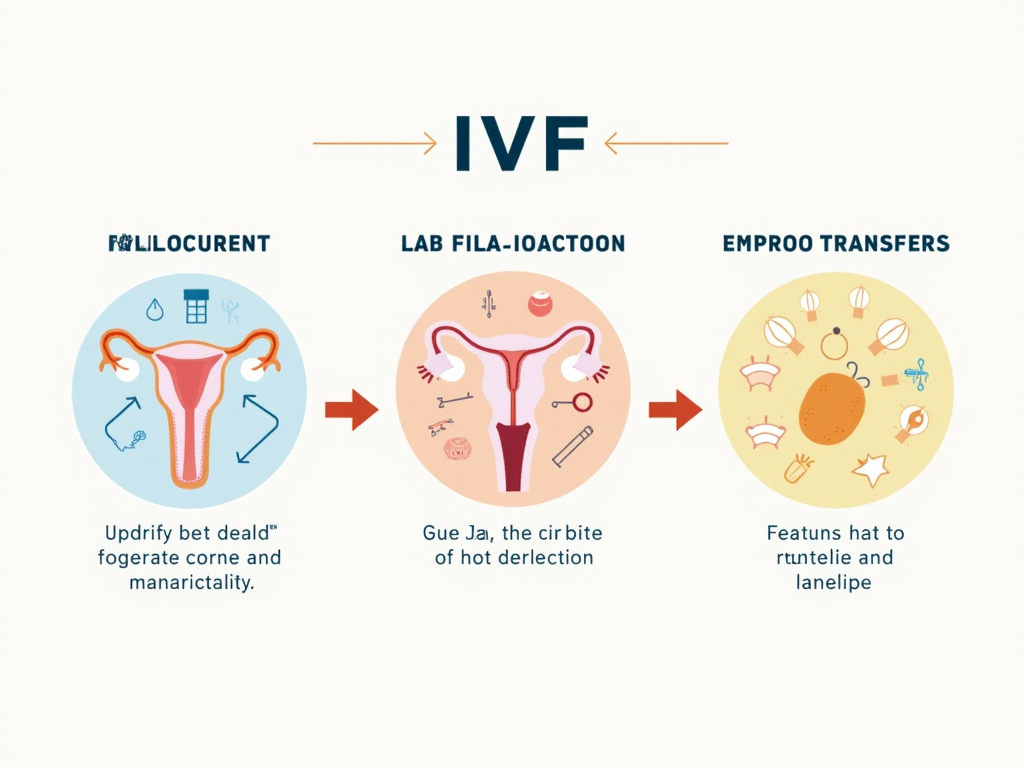Understanding Your Fertility Treatment Options: A Comprehensive Guide
June 7, 2025, 7:18 a.m.
Fertility treatments offer hope to those struggling to conceive. This guide dives into your options, shares real stories, and provides practical tips and emotional support for your journey—all in one place.
What Is Infertility and Why Does It Matter?
Infertility means not getting pregnant after a year of trying (or six months if you’re over 35). It’s more common than you might think, affecting about 1 in 8 couples. The causes can vary—hormones, physical issues, or even stress—and it often hits hard emotionally. Knowing what’s behind it helps you take control.
Doctors usually start with simple tests: blood work to check hormones, ultrasounds to look at your reproductive organs, or semen analysis for men. The results can feel overwhelming, but they’re the key to finding the right path forward. And if you’re feeling lost or sad, that’s normal. Millions go through this.

Here are some common causes:
- Hormonal Imbalances: These can stop ovulation or lower sperm count.
- Physical Problems: Blocked tubes or growths like fibroids can get in the way.
- Lifestyle: Age, smoking, or weight can play a role.
The good news? Many of these can be addressed with the right treatment.
Your Fertility Treatment Options Explained
Once you know what’s going on, you can explore treatments. There’s no one-size-fits-all answer, but here’s a rundown of the most common ones.
Fertility Medications
Pills like Clomid or injections can kickstart ovulation. They’re affordable and simple, with success rates around 20-40% per cycle. Side effects like mood swings can happen, but they’re usually manageable.
Intrauterine Insemination (IUI)
IUI puts sperm right into the uterus during ovulation. It’s less invasive than other options and works well if sperm needs a little help reaching the egg. Success rates hover between 10-20% per try.
In Vitro Fertilization (IVF)
IVF takes eggs and sperm, combines them in a lab, and places the embryo back in the uterus. It’s a bigger commitment—time, money, and emotions—but success rates can reach 40% per cycle for women under 35, according to the American Society for Reproductive Medicine.

Surgery
If something physical—like scar tissue or a blockage—is the issue, surgery might fix it. It’s not for everyone, but it can boost your chances of conceiving naturally. Risks are low, but recovery takes time.
Each option has trade-offs. Medications are easy but less effective for complex cases. IVF offers higher success but can feel like a rollercoaster. Talk to your doctor about what fits your body and life.
Real Stories of Coping with Infertility
Numbers and facts are one thing, but hearing from real people can make it personal. Here are two stories that might resonate.
- Lisa’s Story: Lisa and her husband tried for years before starting IVF. 'The waiting was brutal,' she says, 'but our twins were worth every tear.' Support from friends kept her going.
- James’s Story: James felt ashamed of his low sperm count. 'I thought it made me less of a man,' he admits. A support group showed him he wasn’t alone.

These stories show the ups and downs. Infertility can test you, but it also reveals strength you didn’t know you had. Connecting with others can lighten the load.
Coping with Infertility: Emotional Support and Resources
The emotional side of infertility is just as real as the physical. You might feel angry, hopeful, or exhausted—sometimes all at once. Here’s how to handle it:
- Talk to Someone: A counselor who gets infertility can help you process it.
- Find Your People: Groups like those at Resolve offer a safe space to share.
- Take Care of You: Walks, journaling, or even a good movie can ease stress.
Studies from Harvard Medical School show stress management can even improve treatment outcomes.
You don’t have to go it alone. Reach out—it’s a sign of strength, not weakness.

How to Prepare for Your First Fertility Consultation
That first appointment can feel big. Here’s how to make it count:
- Bring Your History: Past tests, medications, or cycle details help the doctor.
- Ask Questions: What’s the plan? What are the costs? What’s the success rate?
- Brace Yourself: It’s okay to feel nervous. Bring a partner or friend if you want.
You’ll likely get a physical exam and talk about your goals. The success rates of fertility consultations depend on your situation—age, health, and diagnosis all play a part. But this meeting sets the stage for everything else.
Wrapping Up: Your Journey, Your Way
Understanding your fertility treatment options gives you power. Whether it’s medications, IVF, or just finding the right support, you’ve got choices. Real stories remind us there’s hope, and preparing well keeps you grounded. Take it step by step—you’re not alone in this.